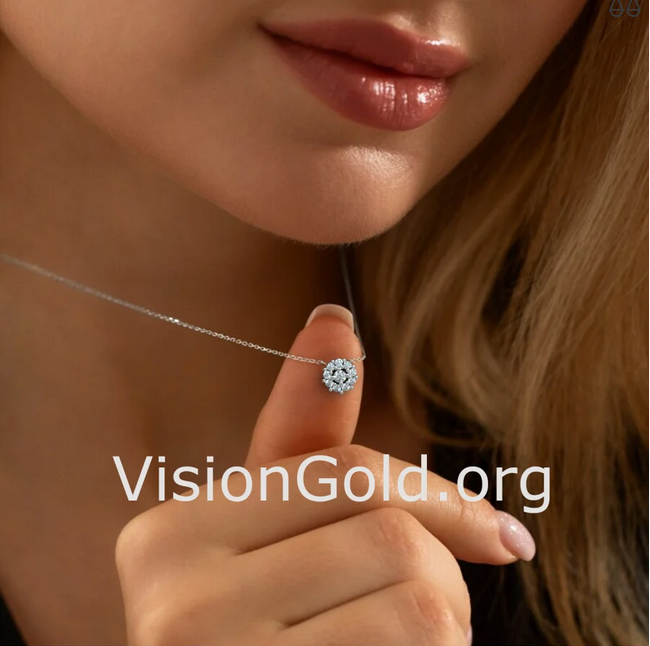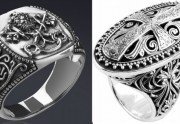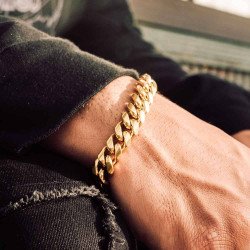Christian jewelry has always held a deep symbolic meaning for believers across the world. Whether it is rings...
- Womens JewelryWomen\'s Rings
- Women\'s Rings
- Women\'s Necklaces
- Women\'s Bracelets
- Earrings for Women
- Cross Necklaces For Women
- Heart Jewelry
- Valentine\'s Day Gifts for Her & Him
- Emerald Jewelry
- Aquamarine Jewelry
- Morganite Jewelry
- Mom jewelry
- Ruby Jewelry
- Sapphire Jewelry
- Evil Eye Jewellery
-
arrow_forward
Men's Rings Men's Rings
-
arrow_forward
Men Bracelets Men's bracelets
-
MenuBack
- .
- CALL FOR ORDER 2105059292
-
WOMEN'S JEWELRY
-
-
RINGS
-
Zircon Solitaire Fine Rings
-
Alphabet ring
-
Name Rings
-
Diamond Rings
-
Rings Silver/Gold
-
Zircon Yellow Gold 14k Fine Rings
-
Eternity Rings
-
Three Stone Diamond Rings
-
Zodiac Rings
-
Aquamarine Rings
-
Diamond Emerald Rings
-
Morganite Engagement Rings
-
Chevalier Rings
-
Mom Ring
-
-
-
BRACELETS
-
Gold/Silver Bracelets
-
Letters Bracelets
-
Custom name bracelet
-
Zodiac
-
Diamond Bracelets
-
-
-
NECKLACES
-
Diamond Necklaces
-
Necklaces Silver/Gold
-
Evil Eye Necklace
-
Name Necklaces
-
Zodiac Pendants
-
Rosary Necklace
-
Necklaces for Moms
-
-
-
EARRINGS
-
Earrings Gold/Silver
-
Diamond Earrings
-
Dangling Earrings
-
-
-
CROSSES
-
Christian Baptismal Crosses
-
Diamond Crosses for Women
-
-
-
MEN'S JEWELRY
-
-
Men Rings
-
Signs & Symbols Rings for Men
-
Mens Gemstone Rings
-
Mens Skull Rings
-
Mens Christian Rings-Religious Rings for Men
-
Animal Rings for Men
-
Economic Line
-
-
-
Men BraceletsMen Bracelets
-
BRACELETS
-
-
-
CufflinksCufflinks
-
Classic Cufflinks
-
Fashion Cufflinks
-
-
-
Men's NecklacesMen's Necklaces
-
-
-
Men CrossesMen Crosses
-
MEN'S CROSSES
-
-
-
WEDDING BANDS
-
Latest posts
-
 Why People Connect with Christian JewelryRead more
Why People Connect with Christian JewelryRead more -
 Lab-Created Diamonds03/21/2025Read more
Lab-Created Diamonds03/21/2025Read moreUnderstanding Lab-Created Diamonds Lab-created diamonds are gemstones engineered in scientific facilities. They...
-
 6 Suggestions for Selecting Jewelry as a Gift (That They’ll Truly Appreciate)03/13/2025Read more
6 Suggestions for Selecting Jewelry as a Gift (That They’ll Truly Appreciate)03/13/2025Read moreJewelry is a heartfelt present. Here’s how to ensure you choose something your loved one will cherish.
-
 Χριστιανικά Κοσμήματα: Διαχρονική Πίστη και Ομορφιά12/28/2024Read more
Χριστιανικά Κοσμήματα: Διαχρονική Πίστη και Ομορφιά12/28/2024Read moreChristian jewelry is a unique category of jewelry that combines spirituality with aesthetics. On our website,...
-
 The Golden Age of Investing: The Trail of Gold Over the Last 20 Years10/05/2024Read more
The Golden Age of Investing: The Trail of Gold Over the Last 20 Years10/05/2024Read moreGold has always been one of the most precious metals and a traditional store of wealth. Its value is based on its...
-
 The Charm of Christian Jewelry by VisionGold.org Workshop08/19/2024Read more
The Charm of Christian Jewelry by VisionGold.org Workshop08/19/2024Read moreChristian jewelry holds a special place in the hearts of believers, as it combines spirituality with artistic...
-
 From Heart to Hand: Tips & Ideas to Give a Promise Ring06/15/2024Read more
From Heart to Hand: Tips & Ideas to Give a Promise Ring06/15/2024Read moreTake your relationship to the next level with one of our creative and romantic ways to give your partner a promise ring.
-
 6+1 Tips for Buying Jewelry as a Gift (They'll Really Love)06/01/2024Read more
6+1 Tips for Buying Jewelry as a Gift (They'll Really Love)06/01/2024Read moreJewelry is a gift from the heart. See how you can choose the right piece for your loved one
-
 5 rules to wear rings | Ring Symbolism02/29/2024Read more
5 rules to wear rings | Ring Symbolism02/29/2024Read moreHow do you know when a person is married? You look at his hand for a ring. That is the power of this small circular...
-
 Men's Necklaces: Expressive Trend and Symbolism12/03/2023Read more
Men's Necklaces: Expressive Trend and Symbolism12/03/2023Read moreMen's necklaces have dynamically invaded the field of men's fashion, now being an essential accessory that gives...
Blog categories
Search in blog

Jewelry from 3000 BC. Ancient Greece until the 21st century

Hellas
The use of gold jewelry can be dated to Ancient Greece in 3000 BC. In ancient Greece, gold beads in the shape of shells, flowers were very common. Beautiful necklaces and earrings have been excavated since the burial of Philip in Northern Greece. Until 300 BC. the Greeks used precious stones such as emeralds, garnets, amethysts and pearls. They also created colored glass stones and enamel stones. Carved cameos made of agate and gold filigree were widely made.
Egypt
Gold was the preferred metal for making jewelry in antiquity. It was rare, it was easy to work with and it never oxidized.
Wonderful bracelets, pendants, necklaces, rings, bracelets, earrings and headdresses were all made in ancient Egypt, the land of the Pharaohs. In 1922, Howard Carter's excavations led to the discovery of Tutankhamun's tomb and many gold artifacts, all of which showed the work of art of ancient Egypt.

Italy
The Italian Etruscans produced a granulated texture of gold. They made very large necklaces, bracelets and earrings. They were also known for producing hollow gold pendants that were full of fragrance. Even today Italians are still known for quality gold jewelry.
Rome
The Romans used 18 and 24 carat gold for their coins. Coin gold was readily available, so it was popular among craftsmen for decorative jewelry. Over 2000 years ago the Romans used sapphires, emeralds, garnets and amber in their jewelry.
Europe.
During the 13th century the laws of medieval care were enacted which put a (ceiling) ceiling on luxury jewelry and clothing. Residents of the city of France were not allowed to wear belts made of pearls or any other precious stone.

They were also beaten because they wore gold or silver. Similar laws existed in England forbidding artisans from wearing gold and silver. These laws show how fine jewelry had spread beyond the ruling class to the people of the city.
For as long as humanity has existed, precious stones and jewelry have been used as a sign of love for others. While there were many jewels adorned with fine gemstones and made of precious metals, there were also some very good fake jewelry.
True gemstones and pearls come from the east and were bought mainly by the Italians. Italian merchants then sold the jewelry to Europeans.
High quality glass imitations were often used and sold for the purpose of deception. These high quality glass stones were often used in royal funeral ornaments and children's jewelry.
Flawless, round, natural white pearls were more valuable than gemstones. South India supplied some of the best pearls. The Italians were able to make quality gemstones and pearls from imitation glass that could only be identified by a geologist.
There is historical evidence that recipes for fake pearls have been around since 1300. White glass powder was mixed with albumen and snail slime to produce imitation pearls.

Earrings and dress jewelry
During the 17th century the woman always wore earrings. It was very acceptable to wear fake pearls and attach gemstone earrings during the day, saving fine jewelry with diamonds and gemstones for evening wear.
The decoration of the dress was reduced in size. The sleeves or skirts were often decorated with matching brooches.
During the 16th century it was very fashionable to wear large quantities of pearls. Both jewelry and clothing accessories were adorned with pearls.
During the 17th century, the Jaquin of Paris patented a method of making fake pearls. The hollow glass balls were coated with varnish mixed with iridescently ground fish scales. The hollow balls were then filled with wax to reinforce them. This discovery made Paris the leading producer of faux pearls for more than 200 years.
Paste is a glass compound that contains white lead oxide and potash. Paste jewelry was very popular in the late 17th century. The highest quality and long lasting paste jewelry was made after 1734 by Georges Strass.
Paris leads the production of fake gemstones [paste] and fake pearls. Almost any kind of fake gemstone could be made, including fake opals.
After 1760 the production of counterfeit jewelry spread to London and Birmingham. During the Industrial Revolution steel was produced in large quantities and thus was readily available. Wedgwood glass and porcelain cameos were made in English factories and were also very popular.
The fashion of this era also included ornate shoelaces made of paste, steel and tin, ornate buttons with paste jewelry, as well as semi-precious stones for everyday use.

Imperial jewelry
In 1804 Napoleon became emperor of France, resulting in the revival of jewelry and fashion as a new court of grandeur.
The "Joailliers" made fine jewelry and the "bijoutiers" used less valuable materials.
The members of the new French imperial family put the gems of the former French royal family to be repositioned in the latest neoclassical style. New trends soon found their way into Europe, especially England. The main influence for the design was the Greek and the Roman.
Parures and Cameos
Parures was a matching gemstone suite that could include a necklace, a comb, a tiara, a diadem, a band, a pair of bracelets, brooches, rings, earrings or even stud earrings and possibly a belt buckle.
A complete parure consisted of at least four pieces. A demi parure consisted of three or fewer pieces. Both Josephine and Napoleon's second wife had wonderful Parures.
As soon as the crown of Napoleon's crown appeared, the cameo became beloved. The cameos were carved from hard stone, niche shells and even Wedgwood porcelain.
Victorian jewelry
In 1837, when Queen Victoria ascended the throne, jewelry was romantic and nationalistic. It focused on European folk art, which later influenced the arts and crafts movement. By the middle of the century, most Western jewelry came from Europe, with some jewelry being made in North America and Australia.
Mass production of medieval Victorian jewelry in Birmingham, Germany, and Providence, Rhode Island, resulted in lower jewelry standards. Victorian women were outraged when they saw some of the poor quality of much of this jewelry machine.
The woman rebelled by not wearing any jewelry or buying from the rising craftsman artist. Some jewelers such as Tiffany recognized a niche market and began making fine jewelry of very high standard, opening stores in major European cities.

Mourning jewelry
In Victorian times, mourning jewelry was very fashionable. The first months of mourning were not adorned with jewelry of any kind. As mourning rituals increased, mourning jewelry developed as a fashion item. Queen Victorian wore many jewels of mourning after the death of Prince Albert.
The jet from Whitby in the North of England became mournful. All kinds of black material were used and almost all of them included a tuft of the hair of a dead loved one. The hair was also braided, braided or twisted very tightly until it became hard and like a thread.
Arts and Crafts Jewelry
During the 1870s, the Arts and Crafts movement evolved as a reaction to mass-produced imperfections and inferior mechanical products as a result of the Industrial Revolution.
William Morris and John Ruskin were both leaders of the arts and crafts movement in England. They promoted simple arts and crafts of designs based on floral, primitive or Celtic forms that functioned as wallpapers, furniture and jewelry.
The polished stones used in Arts and Crafts jewelry gave a medieval, simpler, softer, handmade look and feel to the objects.
Art Nouveau
Art Nouveau followed the arts and crafts movement resulting in a new piece of jewelry. The movement started in Paris and its influence spread throughout the western world. Art Nouveau jewelry had curved, colossal organic lines of romantic and imaginative daydreaming.
It was very ethereal which turned into winged forms of birds and flowers. The Frenchman, Rene Lalique was the leading goldsmith of the Art Nouveau era, producing exceptional pieces. Today, the Art Nouveau style is still admired, awaited and copied.
Pearls
Various combinations of pearl necklaces come and go out of fashion with regularity, so pearls are a must. Today pearls are still essential in the wardrobe. Both faux pearls and cultured pearls are very affordable today.
Since the opening of the trade
Related posts
-
 VisionGold Εργαστήριο Κοσμημάτων
Posted in: Jewelery buying guide05/21/2022χρυσοχοεια αθηνα,ερμου εργαστηρια,χρυσοχοιασ αθηνα κεντρο,εργαστηριο χρυσοχοιασ συνταγμα,εργαστηριο ασημικων...Read more
VisionGold Εργαστήριο Κοσμημάτων
Posted in: Jewelery buying guide05/21/2022χρυσοχοεια αθηνα,ερμου εργαστηρια,χρυσοχοιασ αθηνα κεντρο,εργαστηριο χρυσοχοιασ συνταγμα,εργαστηριο ασημικων...Read more -
 Επιλέξτε το σωστό διαμάντι για το μονόπετρο δαχτυλίδι σας
Posted in: Jewelery buying guide05/21/2022Τα διαμάντια είναι παντοτινά και φυσικά ο καλύτερος φίλος μιας γυναίκας........ Παρόλα αυτά είναι υπερτιμημένα και...Read more
Επιλέξτε το σωστό διαμάντι για το μονόπετρο δαχτυλίδι σας
Posted in: Jewelery buying guide05/21/2022Τα διαμάντια είναι παντοτινά και φυσικά ο καλύτερος φίλος μιας γυναίκας........ Παρόλα αυτά είναι υπερτιμημένα και...Read more -
 Οδηγός αγοράς ανδρικών δαχτυλιδιών
05/21/2022Η πλειοψηφία των ανδρών πιθανότητα θα φορέσει μόνο ένα δαχτυλίδι στην ενήλικη τους ζωή αυτό είναι η Βέρα τους. Ένα...Read more
Οδηγός αγοράς ανδρικών δαχτυλιδιών
05/21/2022Η πλειοψηφία των ανδρών πιθανότητα θα φορέσει μόνο ένα δαχτυλίδι στην ενήλικη τους ζωή αυτό είναι η Βέρα τους. Ένα...Read more -
 What Is The Ideal Necklace Length For Each Set - A Mini Jewelery Classification Guide
Posted in: Jewelery buying guide05/24/2022We are women and few of us have the ability to be submissive to ornaments. Their brilliance exudes a distinct...Read more
What Is The Ideal Necklace Length For Each Set - A Mini Jewelery Classification Guide
Posted in: Jewelery buying guide05/24/2022We are women and few of us have the ability to be submissive to ornaments. Their brilliance exudes a distinct...Read more -
 Eternity rings & Half Eternity Rings: Importance, History, How to Wear
05/24/2022Also known for all the infinite rings, the kiwi clouds. It is a gorgeous jewelry decorated in a continuous line with...Read more
Eternity rings & Half Eternity Rings: Importance, History, How to Wear
05/24/2022Also known for all the infinite rings, the kiwi clouds. It is a gorgeous jewelry decorated in a continuous line with...Read more









Leave a comment